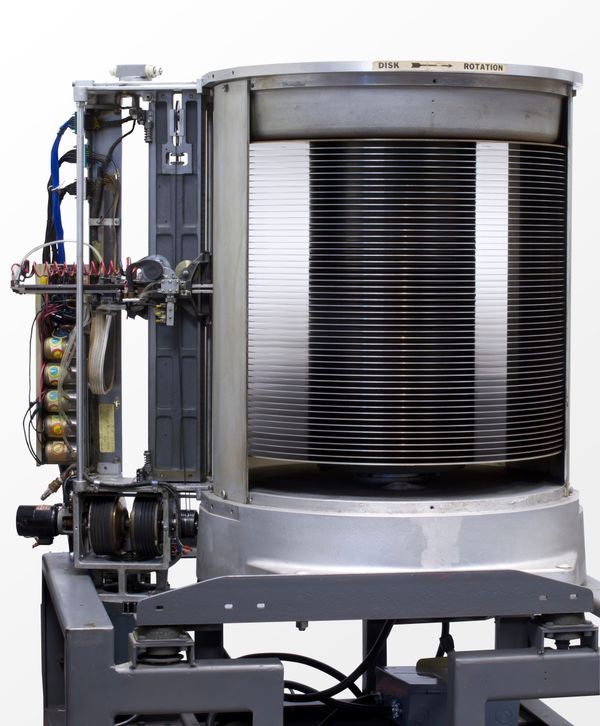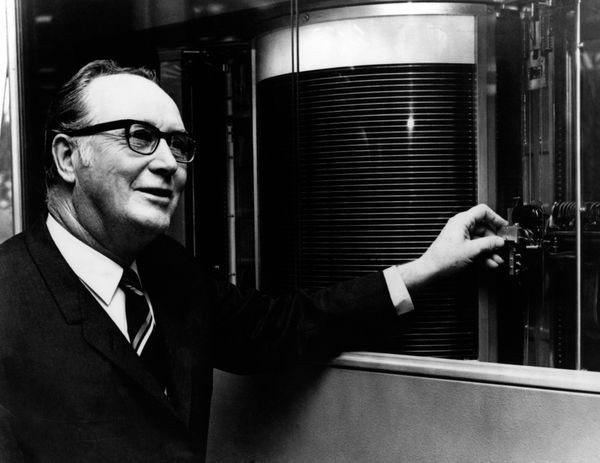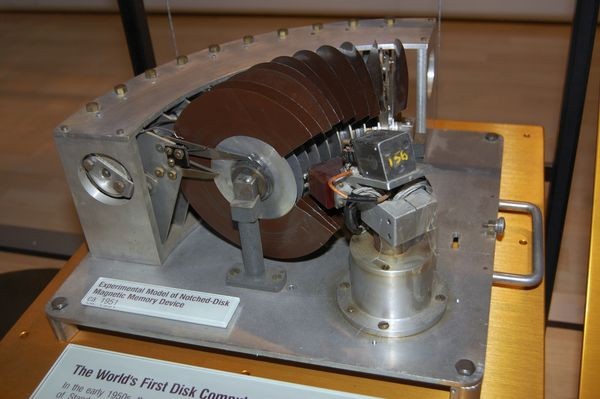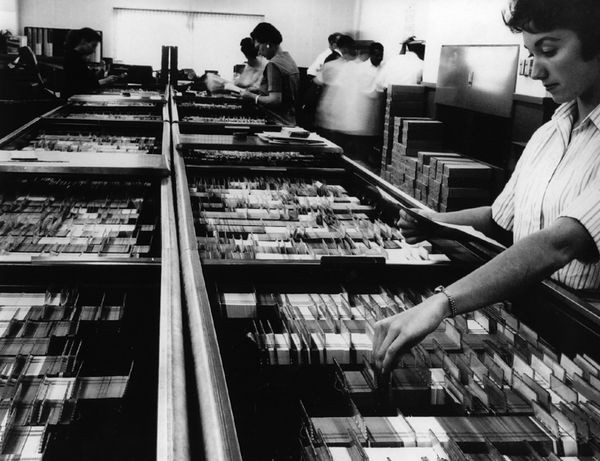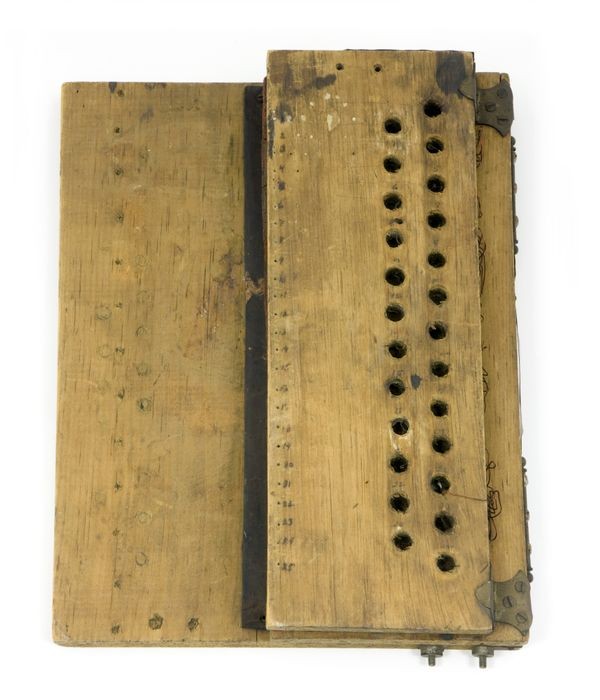The First Disk Drive: RAMAC 350
RAMAC actuator and disk stack
This is the heart of the world’s first disk drive. It has 50 24” disks spinning at 1,200 RPM holding 5 million characters (about 3.75 MB) of information.
The First Disk Drive: RAMAC 350
Computers hold thousands of data records. Imagine if finding the one you wanted required starting with the first, then going through them in order.
High speed, random access memory—plucking information from storage without plodding through sequentially—is essential to the way we use computers today. IBM’s RAMAC (Random Access Method of Accounting and Control) magnetic disk drive pioneered this ability.
The RAMAC 350 storage unit could hold the equivalent of 62,500 punched cards: 5 million characters (about 3.75 MB).
RAMAC team leaders
Left-to-right: R. Manning Hermes, William Goddard, Rey Johnson, Louis Stevens, Arthur Critchlow, and John Haanstra.
View Artifact DetailWhy: The Need
Computers were victims of their own success. As businesses came to rely on them, it became increasingly cumbersome to process towering stacks of punched cards or read data sequentially from magnetic tapes.
IBM recognized the need—and business opportunity—for a storage device that swiftly accessed data in any order. Its RAMAC magnetic disk drive, much faster than any previous technology, unleashed computers’ processing speed by providing inexpensive, fast, large capacity storage.
This first disk drive begat an entire industry that has been fundamental to the computer’s success.
...We must immediately...attack accounting problems under the philosophy of handling each business transaction as it occurs, rather than under the present condition of batching techniques.... [otherwise] we cannot expect to accomplish the real purpose and the real use for electronics in the business world.
Who Created RAMAC?
A high school science teacher in Michigan invented a machine in the 1930s to score standardized tests by sensing pencil marks. IBM acquired the rights to Rey Johnson’s machine. It also acquired Rey Johnson, hiring him as an engineer.
Johnson, who led the RAMAC development team, was known for nurturing a spirit of teamwork, and for drawing on talented individuals from varied backgrounds. He himself had little formal engineering training, yet nonetheless earned more than 90 patents.
In 1986, President Ronald Reagan awarded Johnson the National Medal of Technology.
Laying the Groundwork
Like most inventions, RAMAC built on a foundation of earlier ideas. One inspiration for IBM’s team was a disk drive concept described in 1952 by Jacob Rabinow at the National Bureau of Standards. Rabinow patented but never produced his design.
Rey Johnson in front of RAMAC
In addition to his work on disk drives, Johnson collaborated with Sony on videotape. After retirement, he developed the “Talk to Me Books” technology for Fisher Price.
View Artifact DetailRabinow notched disk prototype
This is an original prototype of Jacob Rabinow’s notched disk. The notches provide space for heads to move to the correct disk.
View Artifact DetailPunched card tub file
Office clerks pull punched cards from a motorized “tub file.” Eliminating the cumbersome tub file was a goal of RAMAC, the world’s first disk drive.
View Artifact DetailTest-scoring machine prototype
IBM hired Rey Johnson in 1934 because he invented a test-scoring machine for schools, which IBM later developed as a product. Johnson established IBM’s San Jose, CA laboratory in 1952 and was charged with bringing west coast engineering talent into IBM.
View Artifact DetailRabinow disk patent
Russian-born Jacob Rabinow earned 230 patents in a long career with the National Bureau of Standards.
View Artifact Detail